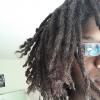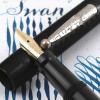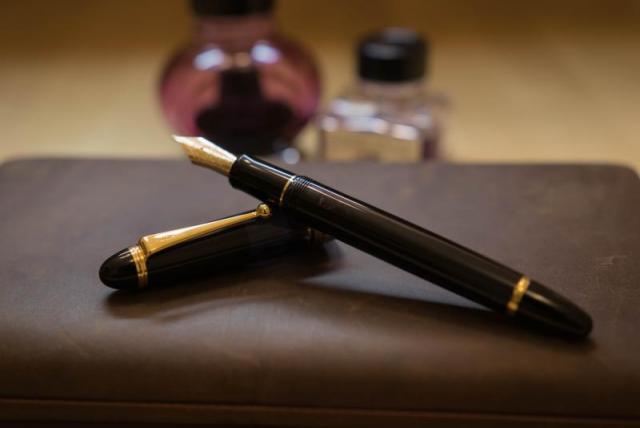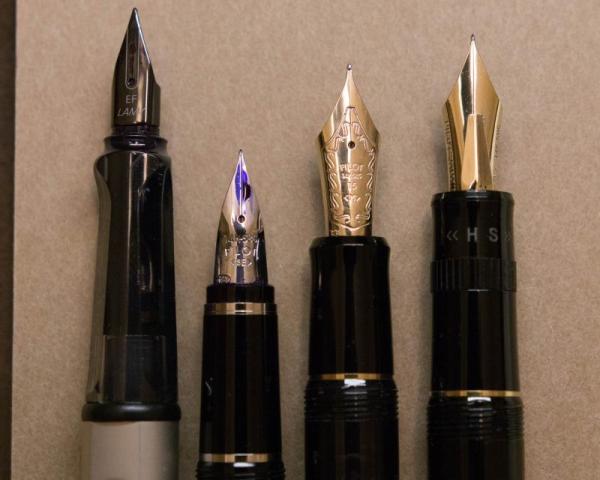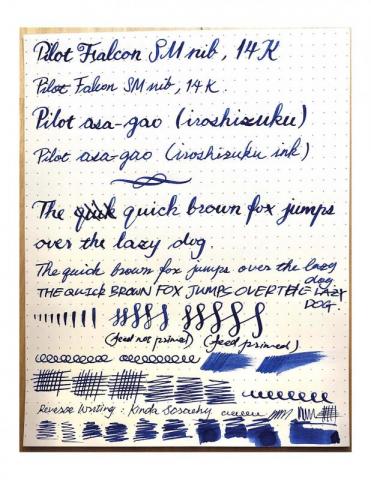Search the Community
Showing results for tags 'custom 823'.
-
OMAS as you already know is a 90 year old Italian manufacturer of fine writing instruments and related luxury goods. Founded in 1925, it does carry the name of its founder, Armando Simoni. OMAS as it is, stands for Officina Meccanica Armando Simoni, which means workshop for machinery And initially f...
- 31 replies
-
I've done some searching but couldn't quite find what I'm looking for. I recently purchased a VP with a Fine nib and it's just finer than I would like, so I'm planning on getting a Medium nib unit later in the month. Later in the year I'm hoping to get my hands on a Custom 823. Before I got my V...
- 10 replies
-
- pilot
- vanishing point
-
(and 3 more)
Tagged with:
-
I started my Japanese pen journey with a Sailor pro gear slim (F) a fun but finicky small pen. Quickly a Platinum #3776 Century (SF) and a Sailor 1911 large (MF) followed. I discovered that Japanese fine nibs really suit my handwriting. I eyeballed this Pilot Custom 823 for quite a while before I de...
- 7 replies
-
- pilot
- custom 823
-
(and 1 more)
Tagged with:
-
The Pilot Custom 823 has been my grail since long and I finally got one last year as a high school graduation present. Now, this review might seem heavily biased, but I assure you that isn’t the case. This truly is a perfect pen for me and I can find NO faults with it, whatsoever. That being said, h...
- 18 replies
-
- pilot
- pilot japan
- (and 5 more)
-
My Pilot Custom 823 has started to leak small amounts of ink from the lower barrel and the trim ring. There appears to be a tiny hairline crack in the area. The pen has not been disassembled. The problem began after a normal flushing due to an ink change. Any way to repair this?
- 3 replies
-
- pilot
- custom 823
-
(and 1 more)
Tagged with:
-

Maintenance Advice Needed For The Pilot Custom 823 (Greasing Seal)
Heretechnocrat posted a topic in Fountain & Dip Pens - First Stop
Hello all, I am pondering a possible acquisition of a Pilot Custom 823 and I only have one concern. I have recently become more sensitive to being able to maintain my pens over the length of time I own them. Specifically, I want to be able to address common issues that are likely to emerge for a p...- 14 replies
-
- pilot
- custom 823
-
(and 3 more)
Tagged with:
-
I love dark purple ink. Currently I have my Pilot Custom 823 inked up with Poussière de Lune but I almost run out. Im looking into Montblanc Lavender Purple now. I wonder whats the difference? Herbin Poussière de Lune is great for me. Since its dark enough but still have some shade. It is quite ni...
-

A Comparative Review - Pilot Custom 823, Justus 95, And Falcon
Zlh296830 posted a topic in Fountain & Dip Pens - First Stop
I recently posted two topics requesting suggestion for a new pen and I finally decided to get a Pilot Justus 95, with a F nib. I promised to do a comparative review after I get my hands on the Justus, and here it is. Here are the links to those two reviews just incase if you want to see all the grea...- 8 replies
-
- pilot
- custom 823
- (and 4 more)
-

A Comparative Review - Pilot Custom 823, Justus 95, And Falcon
Zlh296830 posted a topic in Fountain & Dip Pens - First Stop
I recently posted two topics requesting suggestion for a new pen and I finally decided to get a Pilot Justus 95, with a F nib. I promised to do a comparative review after I get my hands on the Justus, and here it is. Here are the links to those two reviews just incase if you want to see all the grea...-
- pilot
- custom 823
- (and 4 more)
-

Which Pen Should I Get? Justus 95 Or Custom 743?
Zlh296830 posted a topic in Fountain & Dip Pens - First Stop
I am currently a college student and I love using fountain pens. They just make writing much more enjoyable for me. Currently my everyday pens are Pilot Custom 823(M), Pilot Falcon(SEF), and Lamy All-Star(EF). I have them inked with different colors which is great for me to take clear notes. I love,...- 13 replies
-
- pilot
- custom 743
-
(and 5 more)
Tagged with:
-
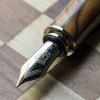
A Tale Of The Lesser Flagship Of Montblanc : The Meisterstück 146
sannidh posted a topic in Fountain Pen Reviews
Loved the MB's flagship pen review by Betweenthelines. And then realized, I was yet to post a review on FPN for the lesser one, the 146. As for me, I came across a real Montblanc pretty much later in life, though used to love a pen called Camlin Premier during school days. It came with a 1-pen le...- 22 replies
-
- montblanc
- meisterstück
-
(and 5 more)
Tagged with:
-
Hi Recently, after watching a few reviews online, I decided that I'd like to get a Pilot Custom 823. I've heard they have great nibs, and I'd love to get a vac filler. The problem is that they're not available from any UK sellers that I know of. And importing from Japan would lead to import cost...
- 20 replies
-
- pilot
- custom 823
- (and 4 more)
-
Hello pen people. I am posting this in dire need of advice. I might buy a Pilot Custom 823 next week or so from the Nibsmith. I am not convinced on the nib size. I am either going for a fine nib or a medium ground to a medium-fine according to Sailors mf width. Can anyone say how the fine nib compar...
- 16 replies
-
- pilot custom 823
- custom 823
-
(and 1 more)
Tagged with:
-

Pilot Custom 823 Vs Visconti Homo Sapiens
s_t_e_v_e posted a topic in Fountain & Dip Pens - First Stop
Apart from being vacuum filled pens, these two are quite different pens. I feel like the Homo Sapiens, though a very cool and unique pen, has more drawbacks than the Custom 823. Here's what I currently like and don't like about each of them: Visconti Homo Sapiens Like Cool design with the unique b...- 23 replies
-
A month or so ago, I bought a Pilot Custom 823 in M from an Amazon reseller. However, the pen just doesn't write about 30% of the time, regardless of blind cap openness, ink, or paper type. Is this a common issue with a common fix, or should I contact Pilot? I bought this pen from Japan and I live i...
- 31 replies
-
- pilot
- custom 823
-
(and 2 more)
Tagged with:
-
How Limited Are Pilot Limited Edition Pens? ( 823 Demonstrator)
kvnlau7 posted a topic in Japan - Asia
Hi guys, I just ordered a pilot custom 823 demonstrator which is supposed to be a limited edition. But how limited are pilots limited edition? I know pilot itself is a huge company what numbers should i think of? Do pilot limited edition pens raise / retain value? thanks for your insight guys ne... -
I've seen this combination appear on so many people's wish-lists that I got tempted too! I found one retailer who would provide the FA nib fitted to a Custom 823; the interestingly-named Tokyo Pen Quill Shop, which is not strictly in Tokyo and doesn't actually sell quills, but they do seem to have...
- 25 replies
-
- custom 823
- fa nib
-
(and 1 more)
Tagged with:
-
Here is another take on a TWSBI 580 Diamond FP with a Fine nib. The reviews at fpn did make me finally buy a TWSBI, just for the fun of dis-assembly and maintenance. In case there are any problems with pictures you can go to the below link on my blog. http://iwonder-thecartographer.blogspot.in/2...


